By Tuesday I was older and wiser. My phone had a nice, fast connection to the internet and I knew to never leave my car without the keys in my pocket. And I never did again!
Here’s a tip: Colombians know how to make scrambled eggs. Breakfast huevos are invariably scrambled and they’re never overcooked. They have a lovely, slightly soft but never runny consistency, and are mixed up with just a hint of veggies or ham or whatnot. They are far superior to the stiff, dry crap that American hotels serve. So that’s what I had for breakfast every morning along with some rolls and a bowl of fruit.
Tuesday was east day, which is easy to do from the city center where I was staying: just turn right out of the hotel; make a quick, hard left onto Calle 13—the big one, not the little one; follow it around as it becomes Carrera 2a; head up to the Universidad de los Andes; make a quick left on Carrera 1 Este, avoiding mobs of students going to class; follow Calle 20, which shortly becomes Calle 22; merge onto Carrera 1; turn left onto Calle 10; and you’re home free! But if you make any kind of mistake at any time, you’re screwed. You will likely spend half an hour shunted onto one-way streets and tiny alleys that take you the wrong way until you finally find your way back to somewhere you can start over from.
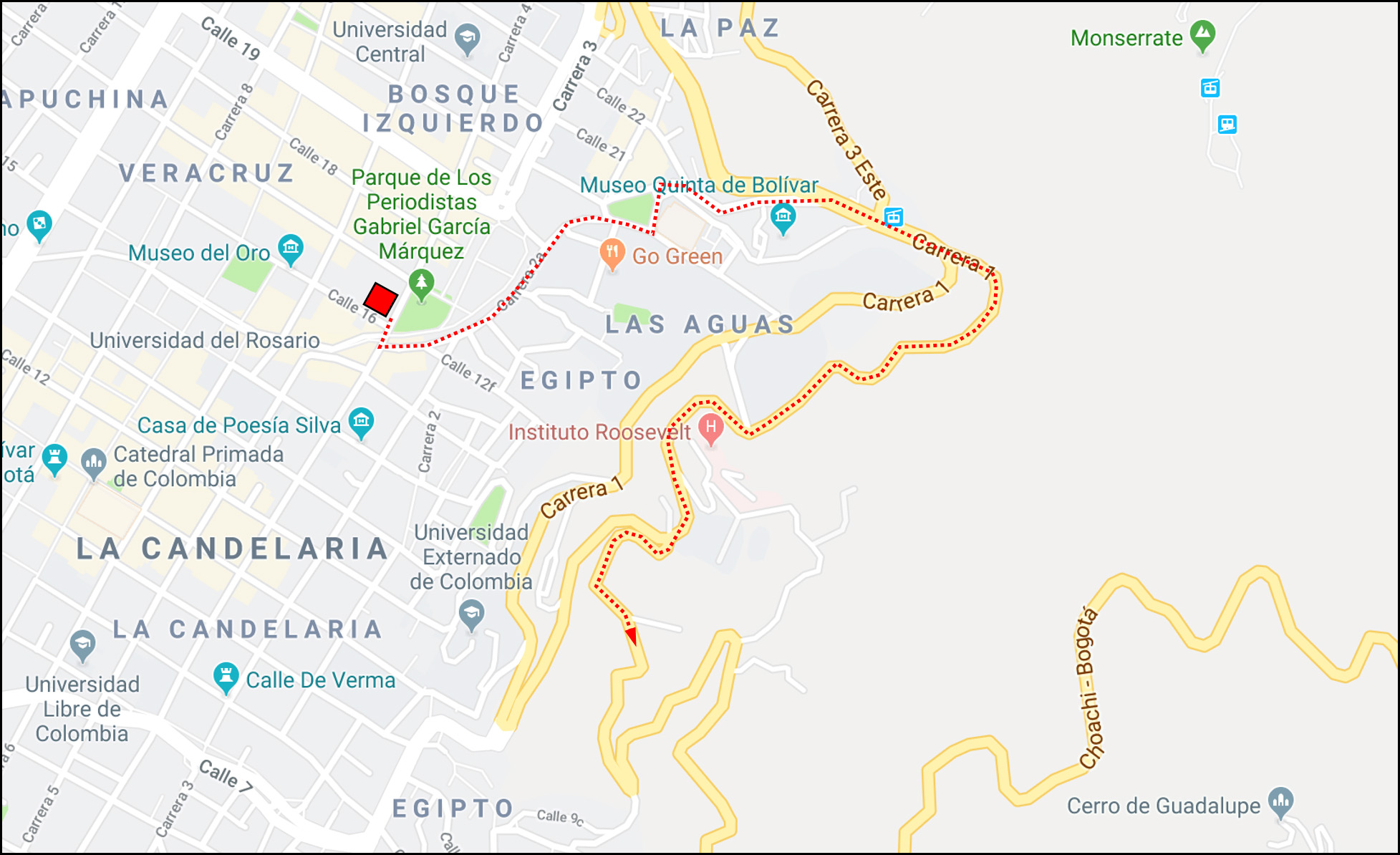
I didn’t avoid any mistakes this day. Somehow I ended up climbing the very steep, very cobblestony Calle 19, which then becomes about 50 feet of dirt called Carrera 5 Este, and then dead ends at a little house that abuts Carrera 1. Here is a picture from Google maps:
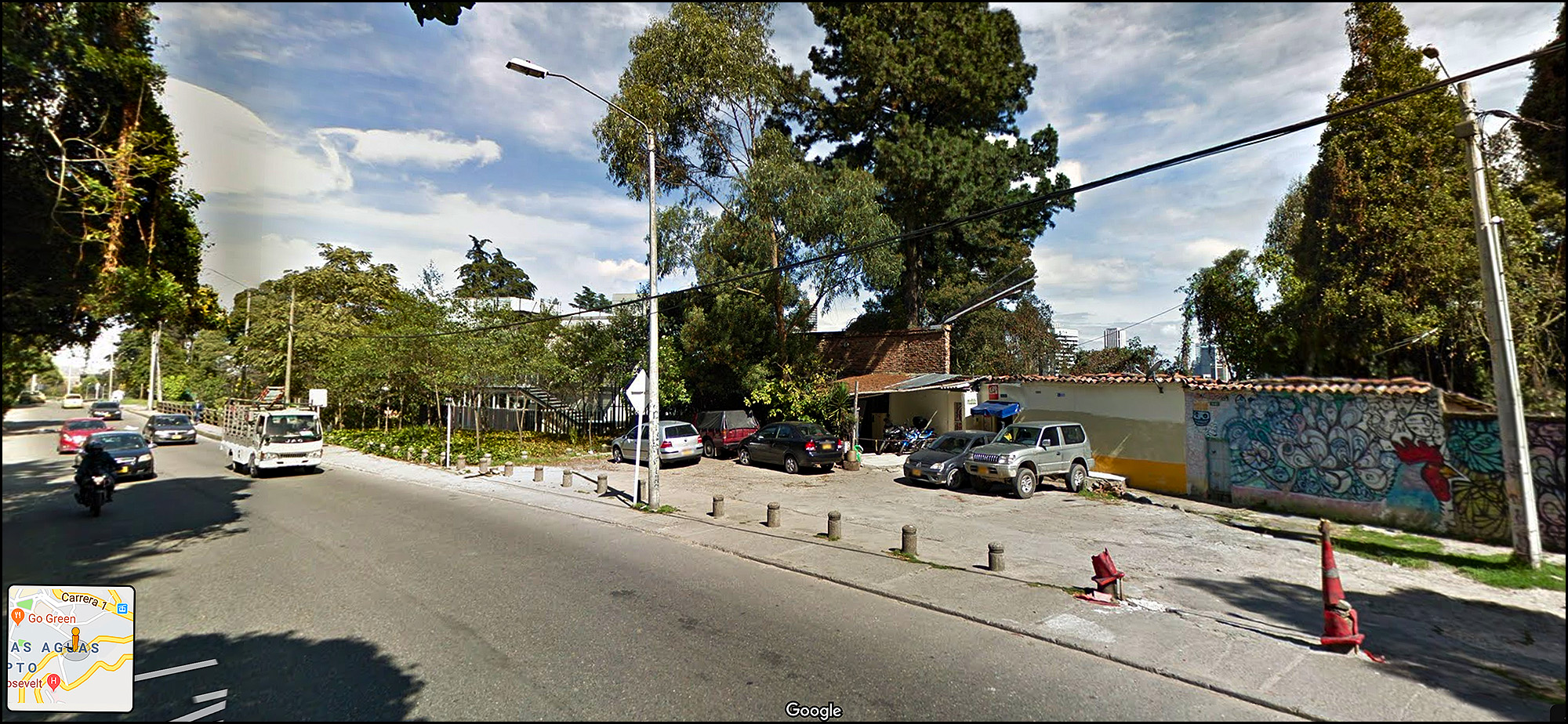
This little piece of dirt is technically Carrera 5 Este, but the family there rents it out to university students as parking.
On the morning I ended up there, this dirt lot was full of cars. The family apparently rents out their front yard to university students as parking, and since someone drove up behind me I couldn’t even turn around to get out. I finally managed, barely, to push my car between the concrete barriers that separated their house from Carrera 1, but unfortunately this was the section of Carrera 1 heading into the city, not out of it. About a mile later I made an illegal U-turn and got onto Carrera 1 heading in the right direction. This shortly turned into Calle 10 and then into the Choachí-Bogotá road, a very pleasant, mildly twisty parkway with almost no traffic. Here is Bogotá from a little ways up:
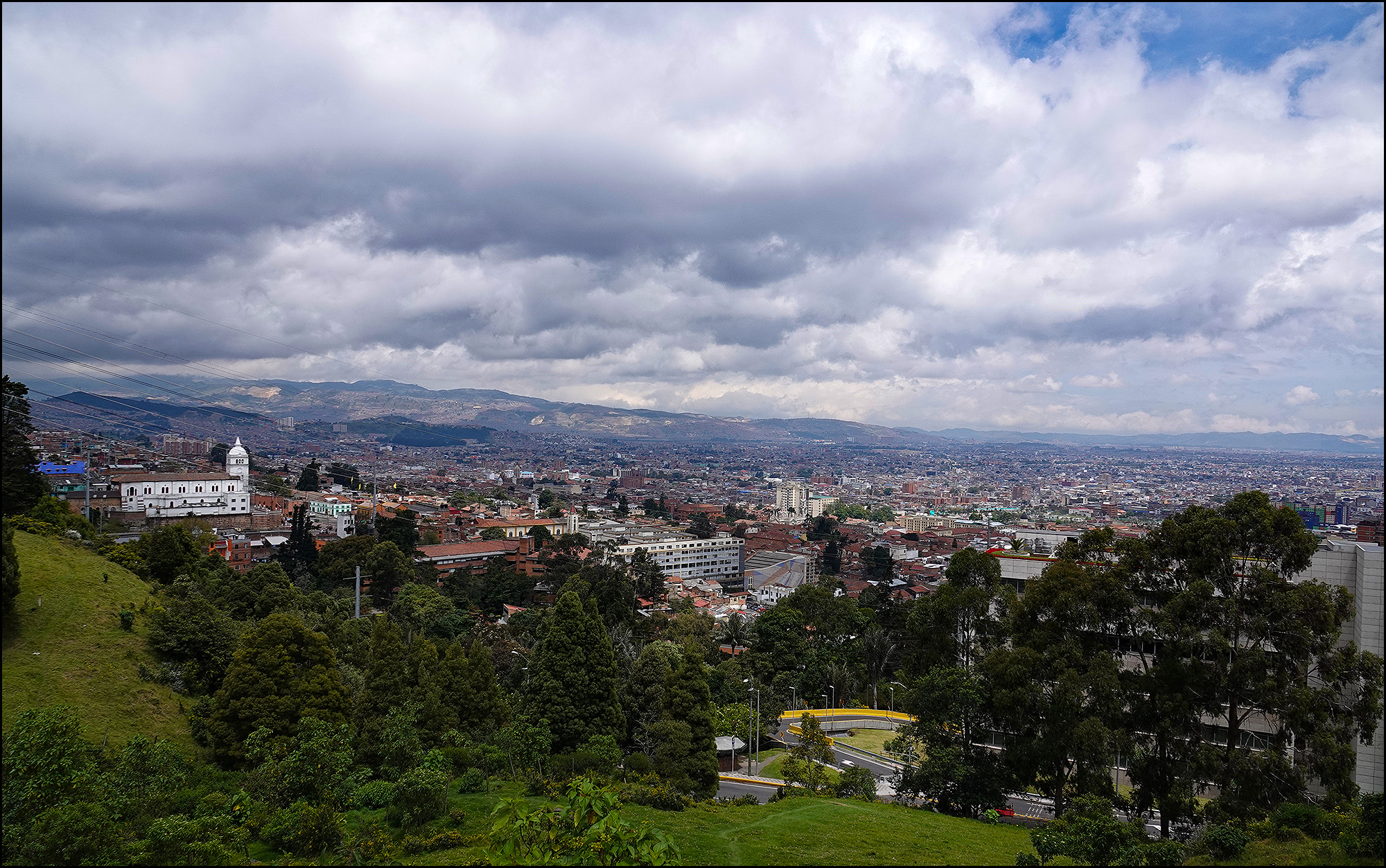
The city of Bogotá from the Choachí-Bogotá road.
With the rigors of Bogotá behind me this turned into an absolutely lovely drive. The road was excellent, there was almost no traffic, and the scenery was gorgeous. At the top you’re actually a bit higher than Monserrate and you can see the church there from above. When you start to descend, there’s valley after valley that look like this:
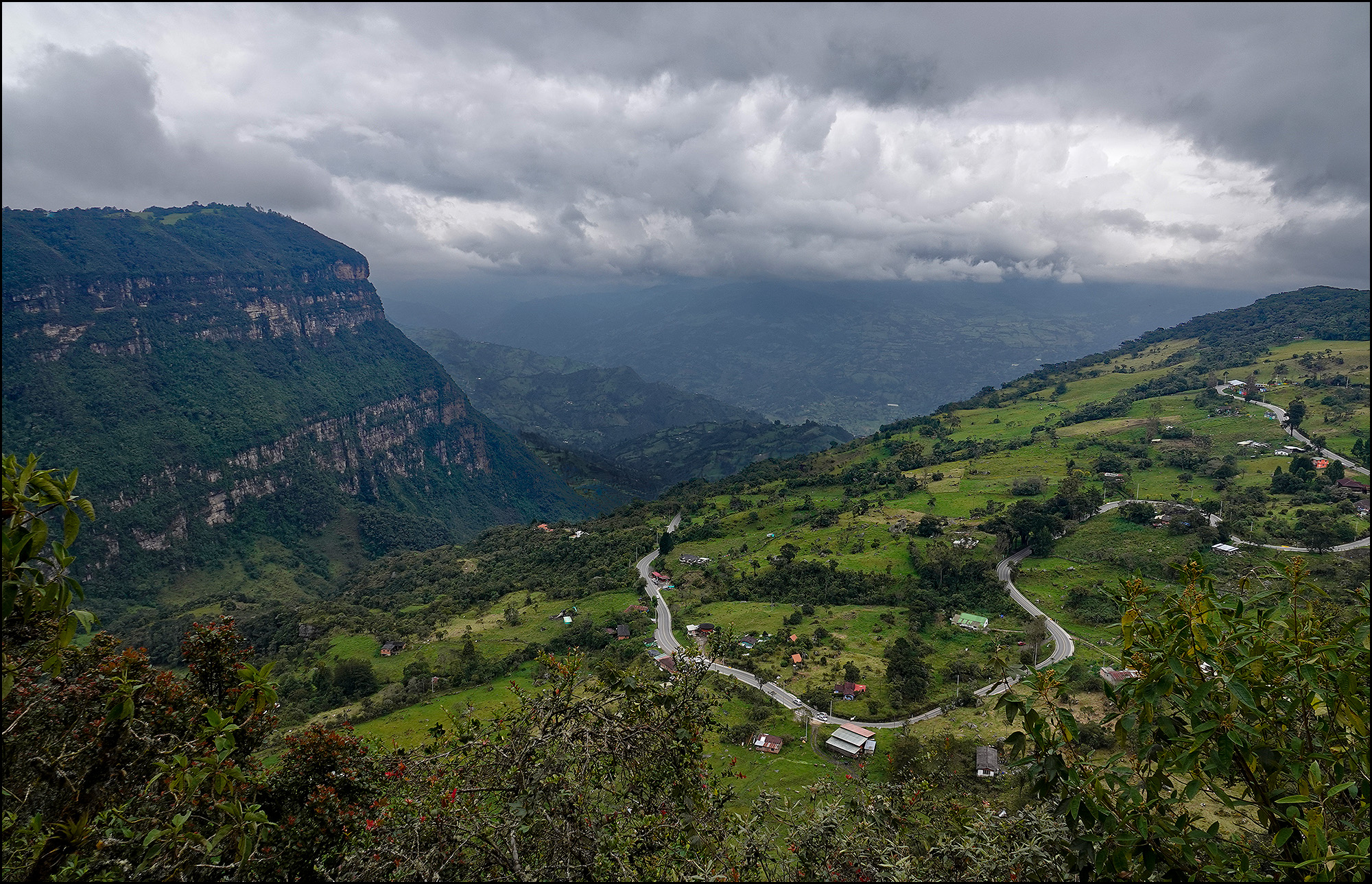
This valley opens up on the road over the mountains after you get to the top and begin to descend.
The day was mostly cool and overcast. Little roadside shrines dot the road, plus this one gigantic shrine:
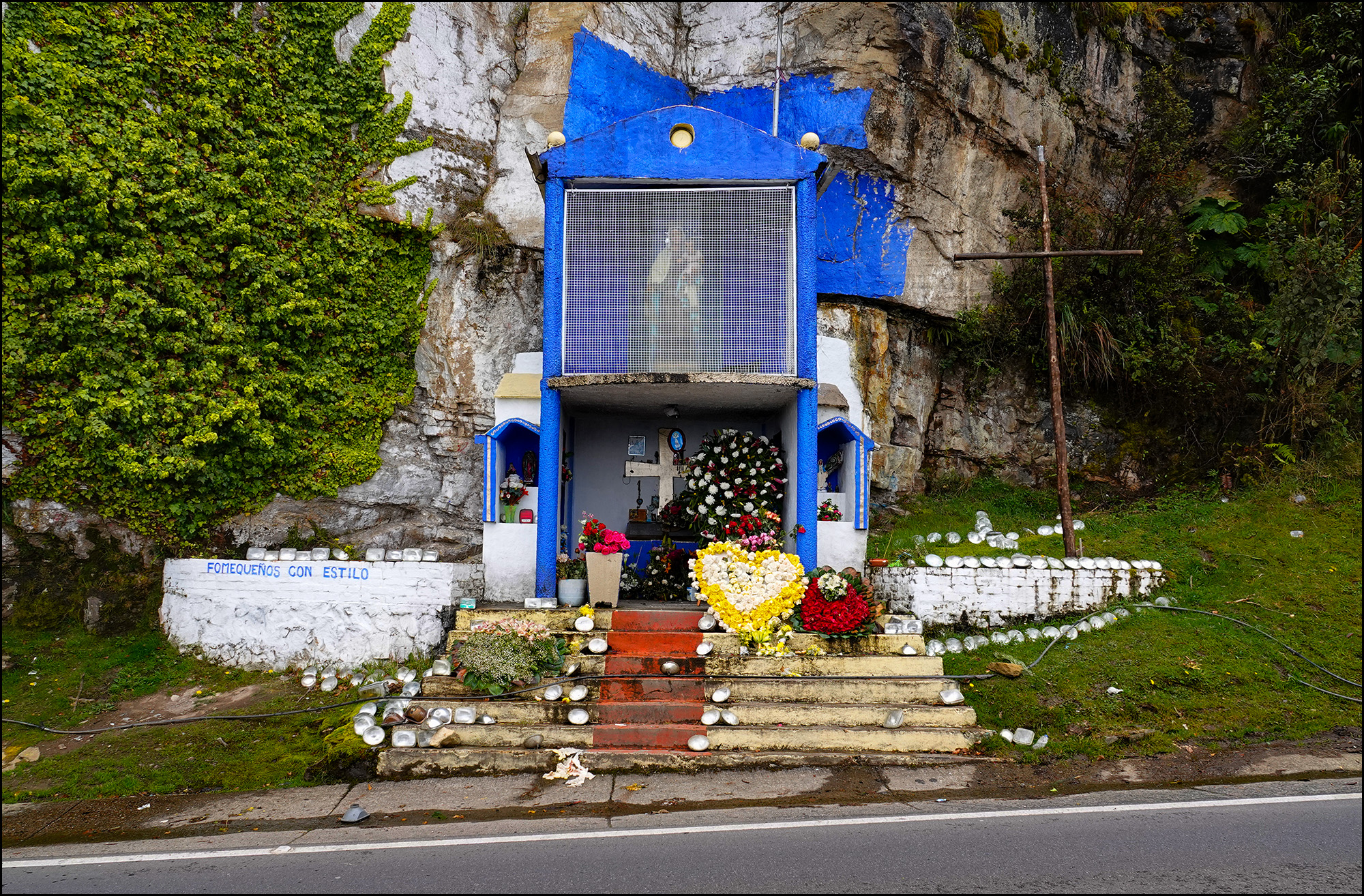
A shrine to outshine all the other shrines.
Now that’s a shrine! The scattering of headlights is common and I’m not sure what it means. Nor do I know what the rules are for building these things. Most of them are modest affairs laid into the rock, but what law governs the construction of a huge edifice like this?
I was headed toward Choachí and got there a little after noon. Here’s the inevitable town square dominated by a large church:
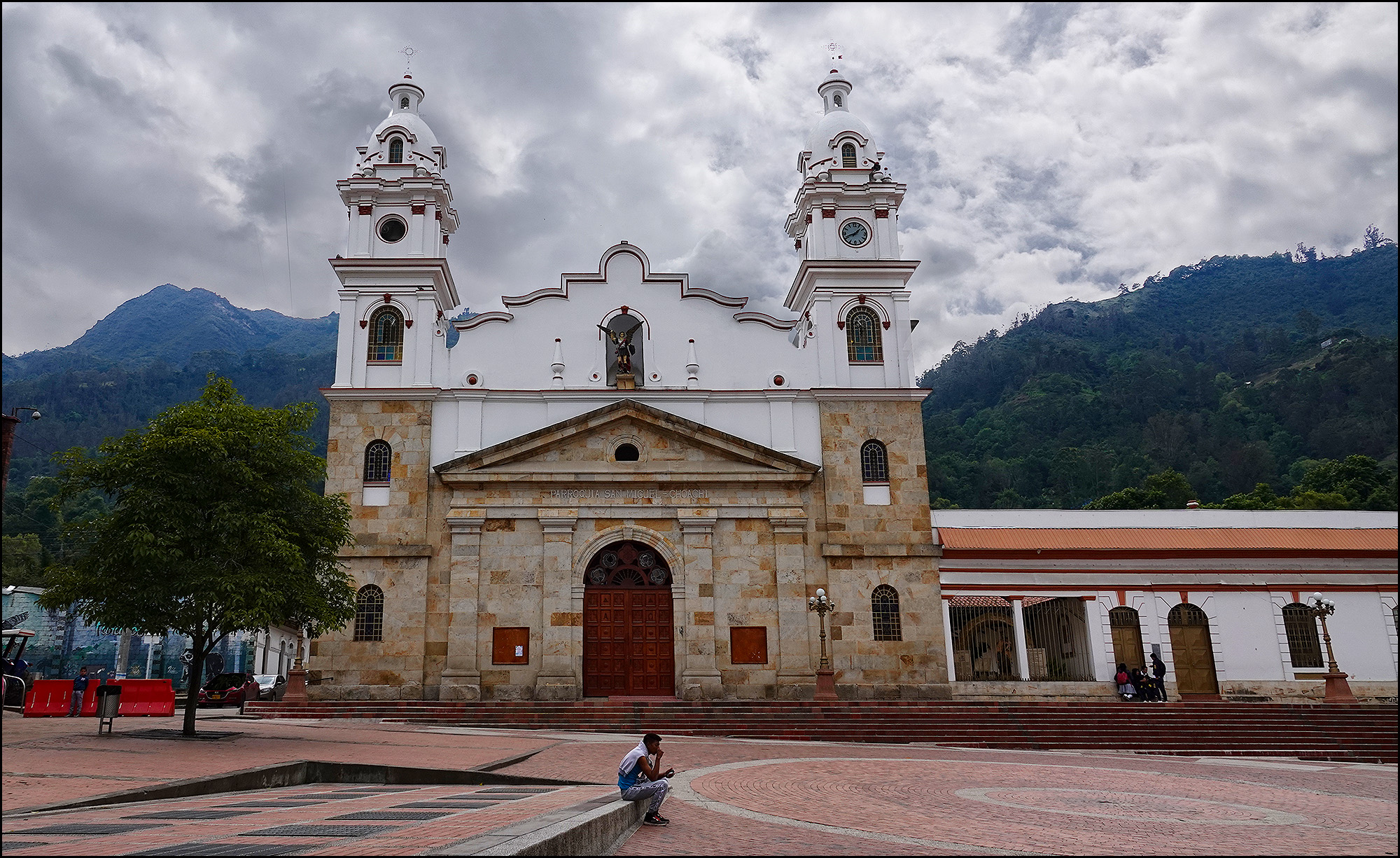
The church of San Miguel in Choachí.
There is not a lot in Choachí, but it’s a perfectly pleasant little town. It also offered me the only real lunch I had the entire time I was in Colombia. I decided to stop for a while and eat at Restaurante El Campanario on Carrera 2, an actual sit-down restaurant which turned out to be very nice. I basically threw a dart at the menu since I understood none of it and the staff spoke no English. I ended up with a huge steak, which was a little more than I bargained for but very tasty. It was accompanied by a couple of corn doodads, which seems to be a national law: all meals in Colombia must be accompanied by a corn-based baked good of some kind.
After lunch I kept going, intending to visit Villavicencio in order to peer down the escarpment into the valley below. But this was not to be. After about an hour I ran into this:
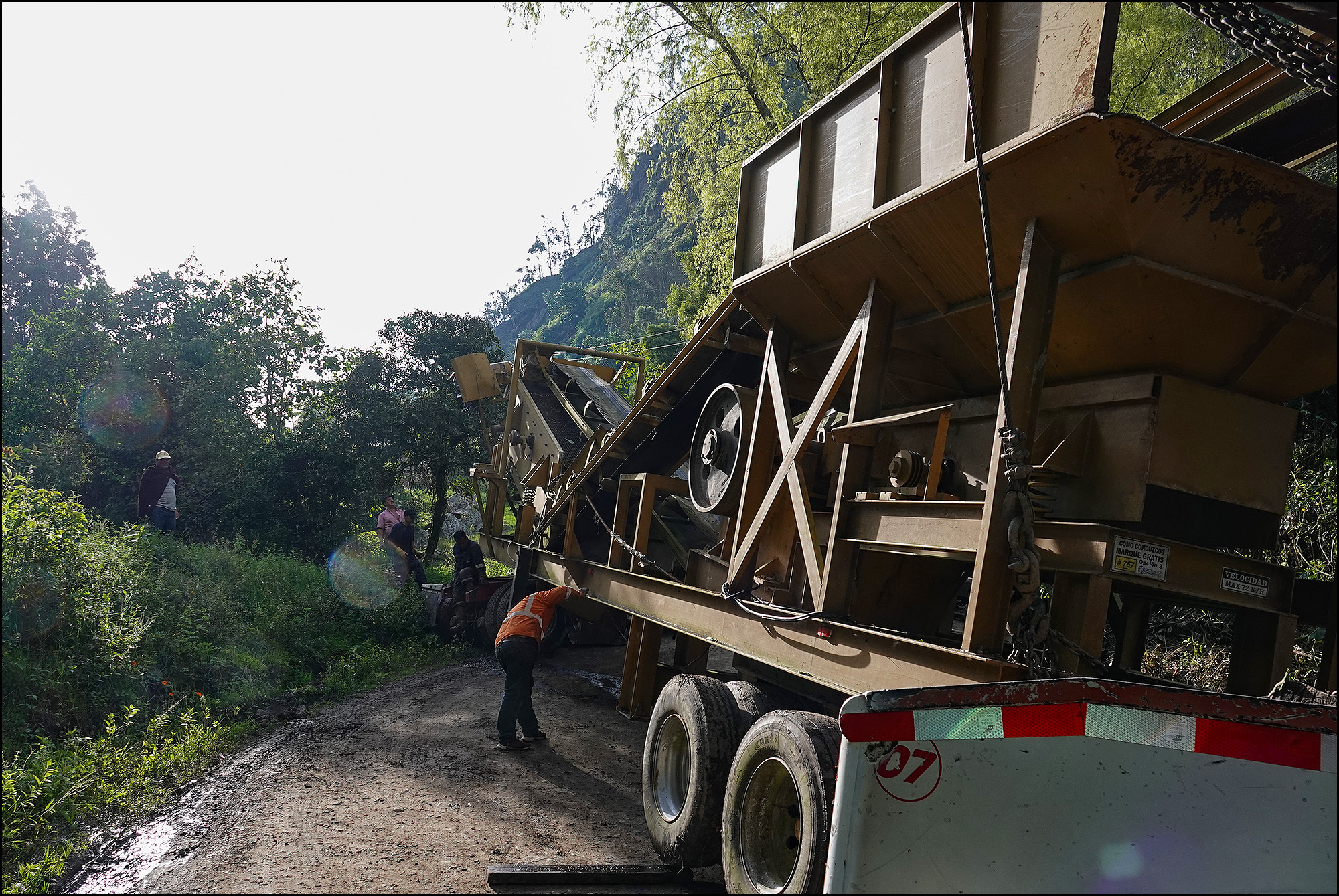
Some kind of enormous road construction vehicle overturned on the road.
This looks to be a huge road grader or paver that turned over after taking a curve slightly too fast. A wrecker truck had already been there for a while and a gang of workmen was yelling and cursing as they tried to get the grader upright and in position to either be towed away or to continue on its way. In any case, it was obvious they had at least another hour of work left, so I turned around and headed home.
This was too bad, but Villavicencio probably wasn’t worth seeing anyway and getting back early rewarded me with a spectacular picture of Bogotá at night that I showed you last week. It also meant that it was a good opportunity to take some nighttime pictures of the city with my monopod. As it happens, this didn’t work out as well as I’d hoped, but it gives you at least an idea of what Bogotá looks like at night. This is Carrera 4 looking south toward La Candelaria, the old town:
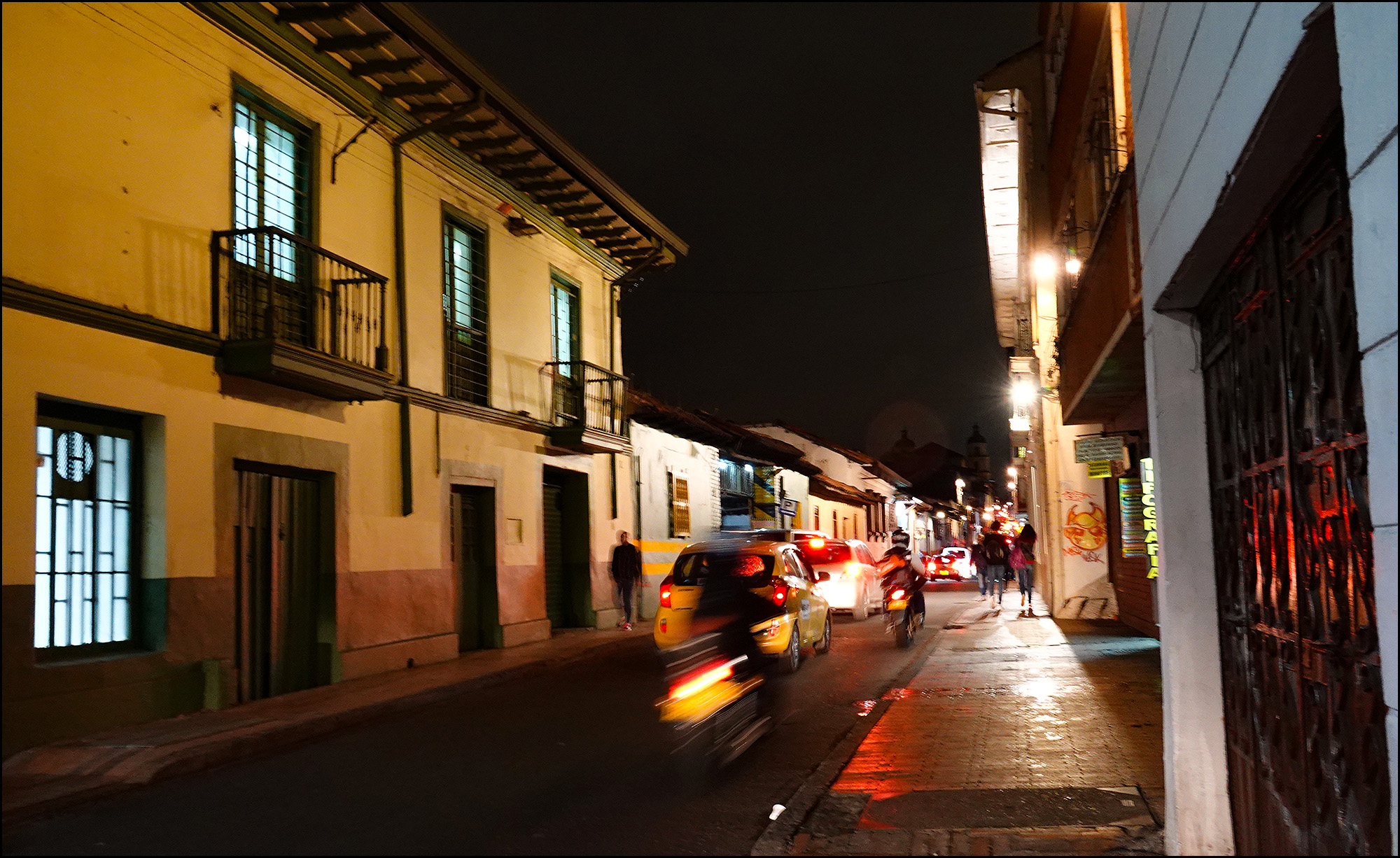
The corner of Carrera 4 and Calle 12d, looking south toward La Candelaria.
I mentioned the other day that Bogotá—and everyplace else I went—struck me as utterly safe, but it’s also true that military guards were visible all over the place.
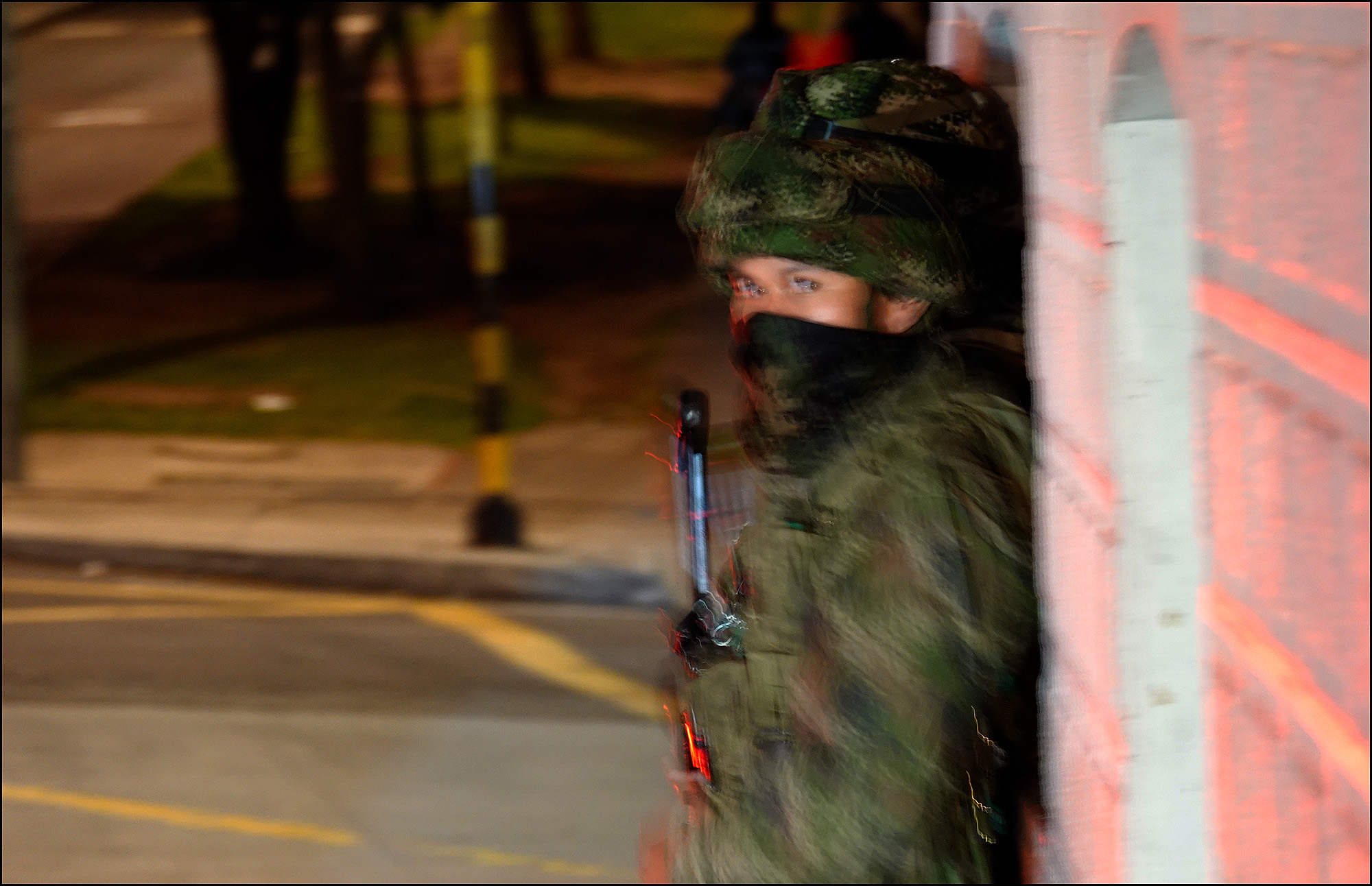
A couple of military guards at the intersection of Carrera 4 and Calle 7. Another one was on the other side of the street, and a group of three more were hanging out on the median strip on Calle 7.
At this point I headed back and then wandered around the streets a bit. This piece of street art is on Carrera 3 just across from the Gabriel Garcia Márquez park:
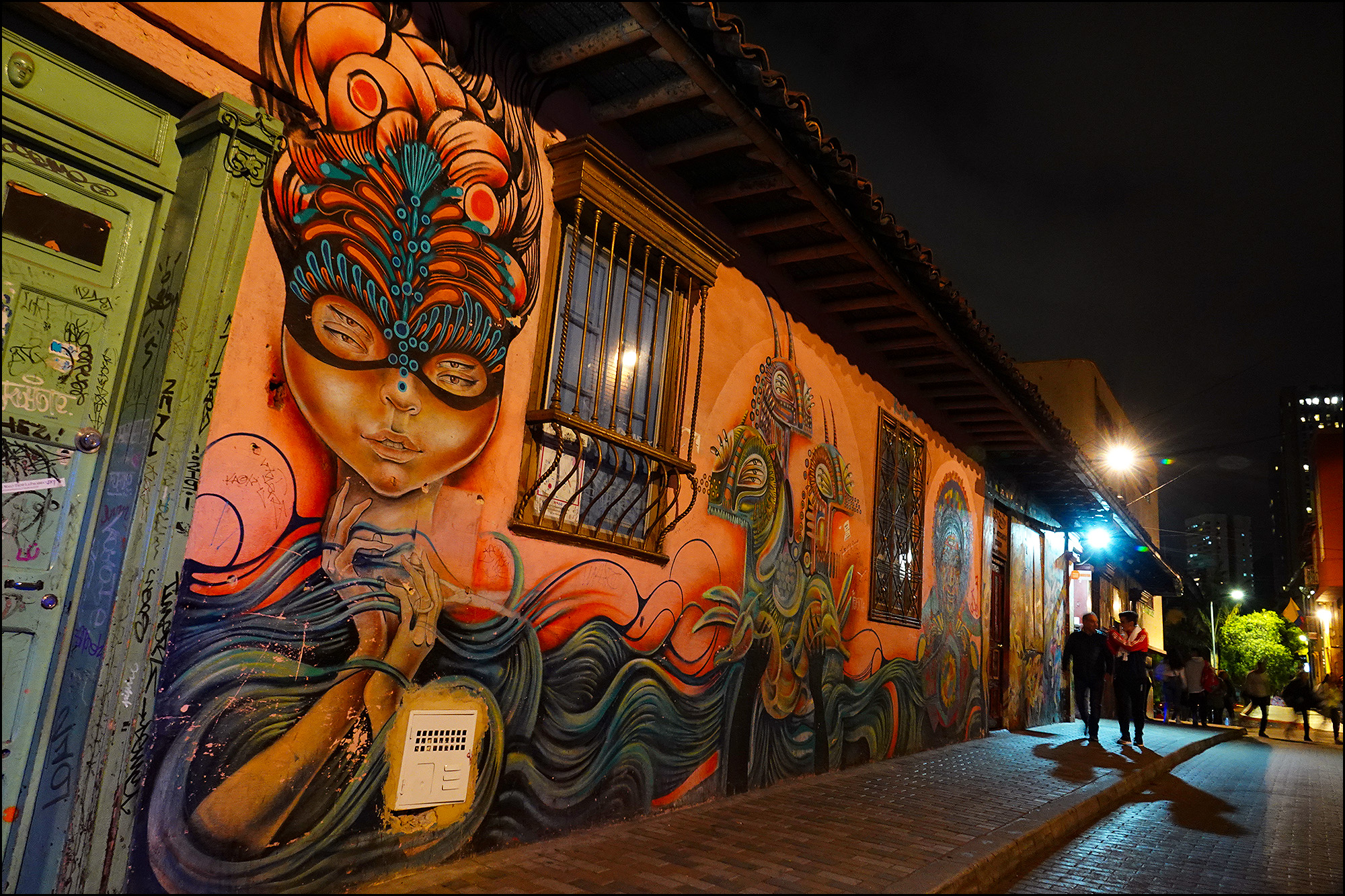
Some street art on Carrera 3.
After that I bought a couple of pieces of fried chicken from a local takeout place and headed back to my room.
COMING UP: Wednesday! Kevin heads north again.

















